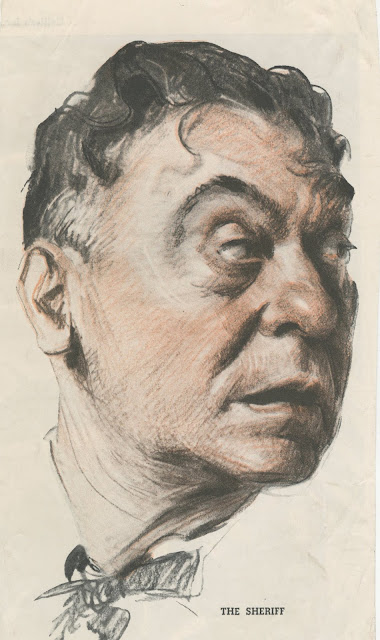The brute beast which underlies the thin polish of civilization is unchained by the game. Goaded to fury by each corrosive click of the croquet balls, the hoop which beckons so temptingly is the gaping jaws of Hades.
Today we don't see it. We look at Winslow Homer's painting, The Croquet Game, and see there's no nudity so how could it be erotic?
Only an imagination borne of constraint could find hidden meaning in driving balls through hoops. Male hearts would flutter when women, bound by corsets and concealed behind hoop skirts, lifted those skirts to expose a foot or even an entire ankle to place it on their opponent's ball. Homer's painting shows the recently introduced "elevator skirt" which enabled daring women to raise or lower their outermost layer as needed to play the game. And art historian Randall Griffin explains the man kneeling down:
Hoop skirts look archaic today in part because they, along with corsets, limited their wearer’s mobility. It would’ve been impossible to bend over decorously while wearing a hoop skirt. This explains why men often had to bend down to see if a ball was legally through a hoop, or to set the balls for a croquet shot.
On the croquet field young couples stood safely out of earshot of their prying chaperones, seizing precious moments to negotiate the tantalizing boundaries of hemlines and relationships.
Whether we're talking about paintings or petticoats, today we seem to have less patience for the process of lifting veils and parting layers. As a result we miss the undercurrents in Homer's painting of a boring lawn game, so we move on to the next picture in the museum.
Let's say the next picture is Homer's 1865 painting, The Veteran in a New Field.
Let's say the next picture is Homer's 1865 painting, The Veteran in a New Field.
Is this just a boring scene about farming? Mature audiences in 1865 would've looked at Homer's painting and seen something far more poignant. The year the Civil War ended, the entire country lay devastated. Hardly a family was left untouched by the slaughter, and maimed veterans limped back to their farms in search of renewal.
Instead of the scythe of death mowing down a wall of troops charging across a field, this veteran's scythe is mowing a wall of wheat in what Homer calls a "new field." The veteran works alone, despite the fact that harvesting was usually a communal job, because he has been isolated by his traumatic experiences. The cycle of harvest might possibly be a path to restoring his scorched soul. What today's viewers might dismiss as a boring scene, Griffin calls "a psychologically acute meditation on the effects of war."
Fifty years ago there was a tectonic shift away from representational, narrative illustration. As pointed out in the definitive History of Illustration text book, photography and television invaded the traditional narrative role of art and "left illustration to capture abstract meaning and phenomena not easily described by literal representations.... Conceptual illustration [relies on]... visual metaphors and other nonliteral approaches."
For example, conceptual illustrations for an article about the psychology behind a "change of heart" effectively convey the subject this way:
If a magazine such as Psychology Today wanted to visualize such a sophisticated topic, it could scarcely rely on old fashioned narrative realism, could it?
Well, look at how beautifully Saul Tepper handled the very same subject in 1933: a young woman decides at the last minute not to take that cruise, and turns and bolts down the gangplank. It's a story, yes, but as we've seen from the Homer paintings above a story can mean so much more to the receptive mind.
Like the Homer paintings, Tepper's literal narrative is not incompatible with abstract meanings or sophisticated concepts. It can "symbolize" a change of heart just as effectively as conceptual art. All that such art requires is a little patience and intellectual engagement. That requirement (as well as competition from photography) may have played a role in the public's turn to conceptual illustration.


































































